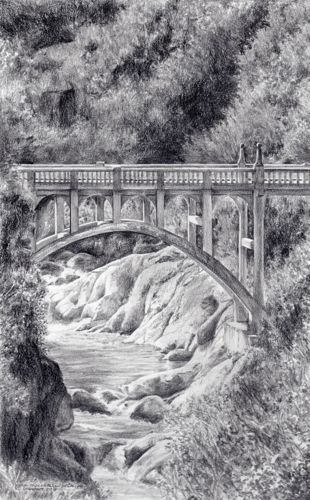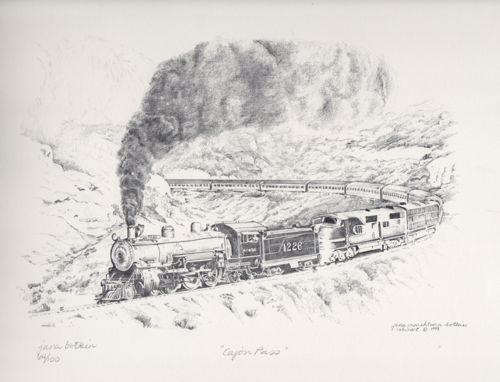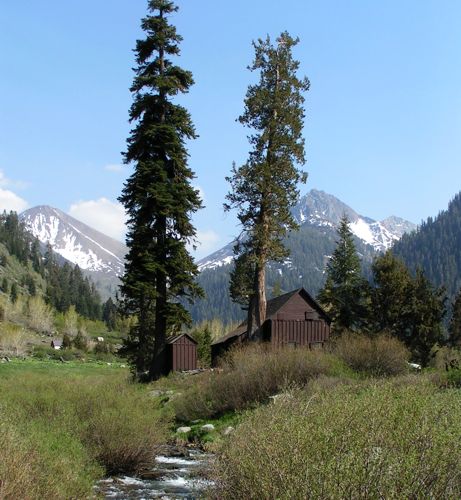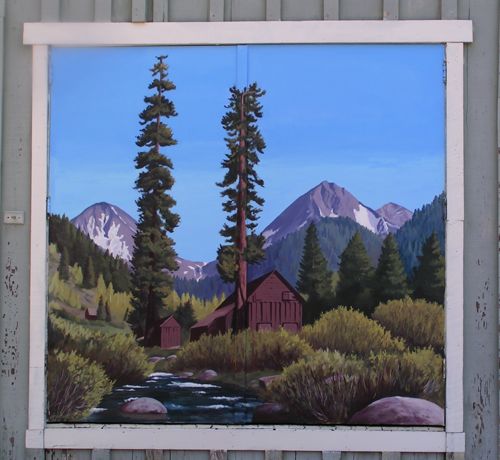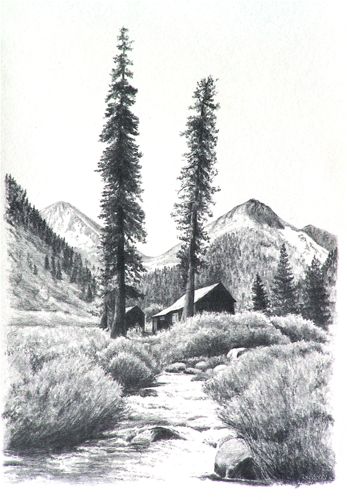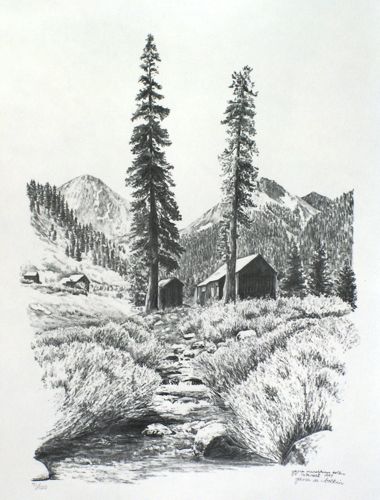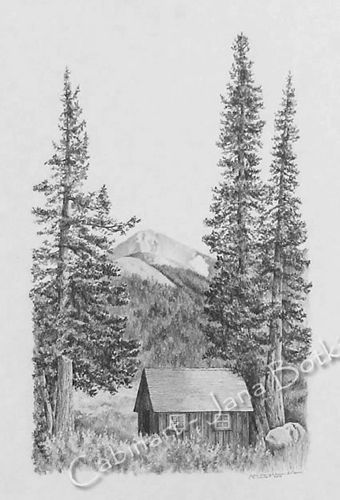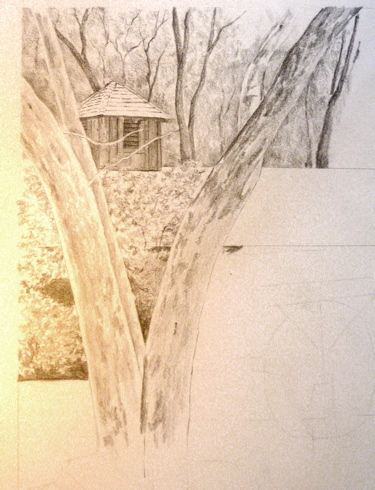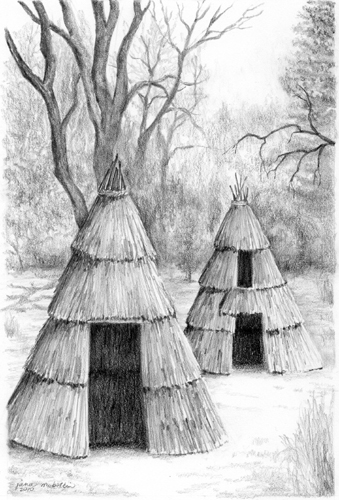Remember I posted about entering a competition – juried and judged art show in Wisconsin? My 2 pieces are now in the show. They did not place, but they were juried in and look great on the site! This is the piece that is in the exhibit book but not in the show (go figure. . .)! The show is The Richeson 75, and as a California artist, I am quite pleased to be showing off the beauty of our state in Wisconsin.
WIP, part 2
Work In Progress, remember? Wowsa, that castle is full of teeniny little parts. Have a look at hours and hours and hours of drawing. Of course I exaggerate to make a point – you knew that, right?
Back in the olden days, the latter part of the last century, before digital cameras and personal computers and all that, I used to regularly draw from 3-1/2 x 5″ photos from a film camera. Hard to imagine. These days a 4×6 seems like a pathetic little miniature photo!
W.I.P.
That means Work In Progress. I just made it up, but I’m probably not the first to do so. I’m also making this up, revising as I go, and Mrs. Bob said the most wonderful thing to me about that:
“Do whatever! You’re the artist and I relish that…I love your work so do what you think looks best!”
Wow! This is the most fun possible with art – the challenge of a collage, Ireland (sigh), drawing with pencil, and complete freedom to use whatever ideas develop. Life is good. 😎
Did you really think those were armadillos??
Cottage Commission Commenced
I am creating a piece of art to the specifications of Bob, My Favorite Customer. (Since he calls me his Favorite Artist, it is only fair that I return the compliment!) He and his family discovered a piece of their history while in Ireland, and I have the privilege of drawing it in pencil.
Bob requested a sketch before I began because the cottage is dilapidated and needed some artistic remodeling. That’s to be expected of something built in 1873.
Good thing Bob knows I can draw or this sketch might have frightened him away. Instead, he approved it, and I began the drawing. Notice the use of 2 separate words to describe what is taking place – “sketch” is loose, rough, for the purpose of conveying visual ideas. A “drawing” will be much more careful and refined.
Bob likes to see the process as it is taking place. Some people prefer to just be surprised at the end; others like to be included and involved. I do my best to accommodate my customers’ wishes.
In teaching drawing, I urge my students to develop the habit of shading from top to bottom and left to right (left handers should move right to left) because it lessens the smearing. Me? I’m experienced enough to do it any way I want and not have a smearing problem! Or it may be that I am experienced enough to know how to deal with the smearing problem, should one occur!
More Links to Learning
- Chapter Nine
- Chapter Ten
- Chapter Eleven
- Chapter Twelve
- Chapter Thirteen
- Chapter Fourteen
- Chapter Fifteen
- Chapter Sixteen
My maternal grandfather, Eugene B. Maise was a maintenance foreman for the Santa Fe Railroad working in the mountains of San Bernardino. In the late 1940s, he was approached by a photographer who requested help taking photos of the trains as they climbed through Cajon Pass. Note the coal burning engine pulling the passenger cars; the new diesel engines couldn’t quite make the grade. I drew this from a photo from Uncle Frank. That was before I had totally cemented my resolve to work only from my own photos. Besides, I needed a gift for Mom! (Thanks Mom, for rearing me here so I can be a California artist.)
What you want to see
After I got over the thrill of drawing what was really in front of my eyes, I began to want to make better pictures. Real life is messy; artists get to clean it up. It takes practice to draw what isn’t really there, to make up a tree that you didn’t see, to show the edge of the porch that was previously hidden, to work from multiple photos taken from slightly different angles. It is almost impossible to work from photos taken at different times of day from different distances and at different angles. This often requires the skill of a mind reader, and I have learned to say no to some of these requests. But to a certain degree, I can create what we prefer was there.
When someone asks me to draw a house and provides a perfect photo, I have been known to ask why they want a drawing when the photo says it all. The answer is usually that pencil is so beautiful. This is a thrill to my little pencil-loving heart!
Here is the main photo of Farewell Gap again:
Here is a painting in which I scooted things ever so slightly to suit myself.
If you are standing on the bridge at the end of the road in Mineral King, you are probably just in awe of the view. Your brain knows there is a stream underfoot, a cabin sort of close, and Farewell Gap in the distance. Not very many people outside of careful photographers ever realize that there is no place to stand where all three line up for a complete photo! So, when I draw or paint this scene now, I make the necessary adjustments. Until this blog posting, I have never admitted such treachery and deception in recordable form!
And here it is in pencil from 2005 when I really started becoming bold about deceiving the world! (yes, I exaggerate to make a point – try not to get all worked up here!)
What You Really See
As we learn to put on paper what we really see instead of our symbols, it is shocking to learn how much is really there and how it is really shaped or sized. Drawing upside down is one tool; tracing the basic elements and only looking at the tracing instead of the photo is another tool. Another way to simplify what is in front of our eyes is to squint, and the detail fades.
You saw an example of Farewell Gap as it was interpreted by someone who didn’t see or chose to ignore reality. Here is a drawing I did of Farewell Gap a long time ago when I was still bound to photos. It was such a thrill to put on paper exactly what I saw that I didn’t have any interest in editing or creating. I was lost in the joy of “I CAN DO THIS!”
This is not the actual photo from which I worked – 1994 is too long ago for me to be able to put my hands on that exact piece of paper! However, here is the photo of Farewell Gap for comparison purposes:
First Things First
Second in a series called “Thoughtful Thursdays”
Living in a beautiful place often inspires people to create art. Lots of people get the yen to paint, often when retired. (Sometimes I have to bite my tongue to keep from saying, “Oh yeah? I think I’ll try practicing law when I retire!”) Most don’t understand that drawing comes before painting, sort of like grunting and pointing comes before public speaking.
A painting without drawing skills behind it is usually a weak piece of art. By “weak”, I mean weird shapes, bizarre perspective, and lacking in contrast. Unless one can see proportions, perspective and understand values and composition, the resulting paintings will most likely be exercises in frustration. Throw in color, paint consistency and brush behavior, and you get a recipe for visual chaos. (Of course, if one is more process than product oriented, poor paintings may not be considered a problem.)
Drawing is a skill that can be taught, learned, and developed through repetitious practice. I have been teaching people how to draw for 17 years and always tell beginning students “drawing is a skill, not a talent”. It is like typing – everyone can learn to type. Some type 25 words per minute, and others hit 90. Those speedsters are the ones with talent, but all are typists.
Despite knowing the proper sequence of skills, I do understand the desire to just dive in! When I was learning to knit, my attitude was “Scarves? We don’t need no stinkin’ scarves!!” My first project was a sweater, and not just a simple pullover but a cardigan, complete with button bands and button holes! Needless to say, I own many weird sweaters, and, after almost 6 years of knitting, quite a few good ones too. So, it is probably possible learn to paint without first drawing, if one is learning from mistakes in the process rather than just cementing bad practices. Of course one must also be willing to have a collection of weird paintings!
Musicians, particularly pianists, have to practice like crazy. They play lots and lots of scales, repetitious exercises, picking apart songs line by line, phrase by phrase, note by note. Artists sometimes forget to practice and treat each new piece as if it were the performance of a lifetime, or thinking in athletic terms, an Olympic event. Practice, practice, practice. This is how you learn to draw and to cement those skills of proportion, perspective, value and composition.
The drawing above was done when I was competent in my drawing skills. This painting was my first attempt at the same subject when I was brand new to oils (try to be polite!):
Here it is again after 3 years of practice with oils (and I’m sure it will look hideous to me in another 3 years!):
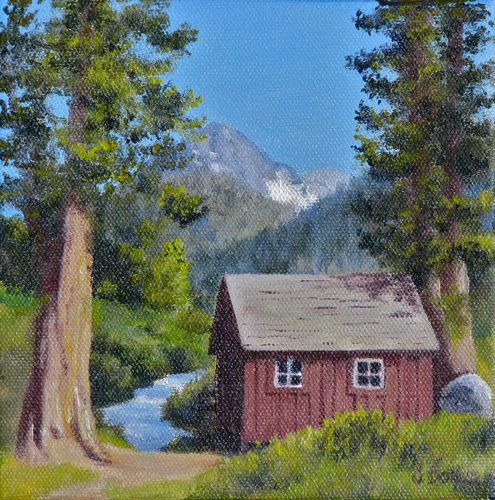 It is all speckled because I photographed it wet in bright sunlight and the sun reflected off the texture of the canvas. Photography is another skill that requires training and practice!
It is all speckled because I photographed it wet in bright sunlight and the sun reflected off the texture of the canvas. Photography is another skill that requires training and practice!
Drawing again!
One more week in the studio due to technical difficulties with the mural. The Mural Team will sort it out, and I should be back on the wall next week. Meanwhile, back at the studio, I am working on this large drawing of a beautiful back yard on the river.
It is taking a pile of reference photos, and a list of more needed is growing daily.
This is the upper left corner. I started there, and now am jumping all over the drawing because I am missing so much visual information. No matter how many photos I take, I always seem to need more. This is because people hire me for accuracy, not just my “impression”. My art is called “realism” for a reason!
Nine One One, part two
Here is a Yokuts shelter. From the diagram that the author provided, I had to ask if these were little Christmas trees made of thatch! She gave me an explanation, so hopefully the drawing will clear up any sort of confusion as to the nature of these little structures. The book will be titled The Sierra Before History: Ancient Landscapes, Early Peoples. It is by Louise Jackson and will be out this spring. The book will be available locally at The Book Garden in Exeter, or through the publisher, Mountain Press http://mountain-press.com/index.php , and other places that carry local writers.
